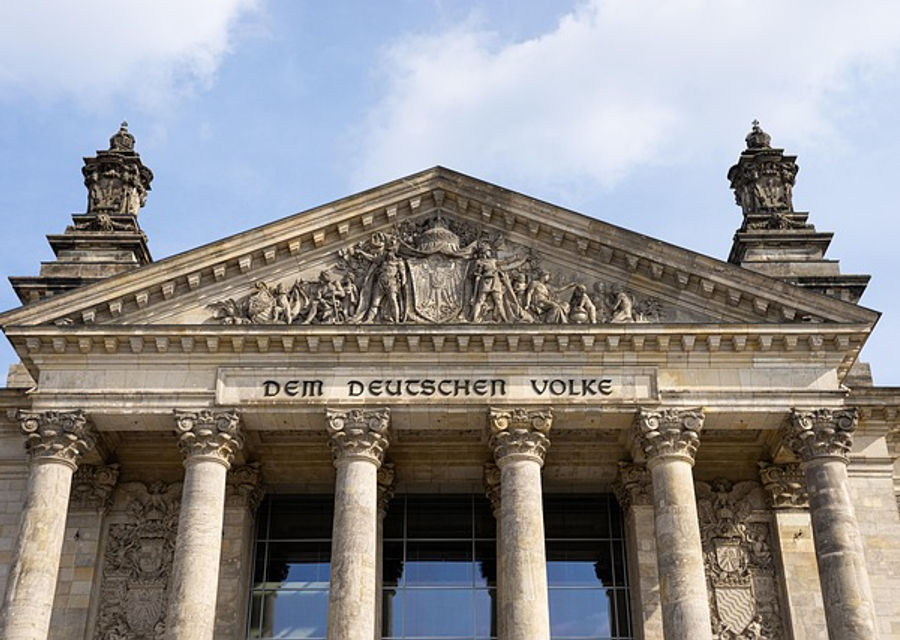Decoding IRFC Share Price: Trends and Future Outlook
- THE MAG POST

- 3 hours ago
- 11 min read

Understanding the IRFC share price is essential for investors interested in India's railway sector. As the primary financing arm of Indian Railways, IRFC's stock performance reflects the health of railway infrastructure projects. The IRFC share price is influenced by government policies, market sentiment, and the company's financial performance. By tracking the IRFC share price, investors gain insights into the broader economic trends affecting public sector investments. Let's explore the factors that drive the IRFC share price and how to make informed investment decisions.
The Indian Railway Finance Corporation (IRFC) is a vital player in India's financial landscape, particularly concerning the funding of railway infrastructure. Today, understanding the IRFC share price becomes crucial for investors tracking the performance of public sector undertakings and their role in national development. The IRFC share price reflects the market's sentiment towards the company's ability to raise and manage funds effectively, which directly impacts the expansion and maintenance of India's railway network. Monitoring the IRFC share price offers insights into the broader economic trends affecting public sector investments and infrastructure development, making it a key indicator for financial analysts and individual investors alike.
Analyzing the CurrentIRFC Share PriceTrends
As of August 12, 2025, the IRFC share price on the National Stock Exchange (NSE) stood at ₹126.20, a slight decrease of 0.47% from the previous closing. This fluctuation is influenced by various market dynamics, including overall investor sentiment, sector-specific news, and the company's financial performance. The IRFC share price is closely watched by investors who consider it a barometer of the financial health and future prospects of the Indian Railways. Understanding these trends requires a comprehensive analysis of market capitalization, trading volumes, and other key financial indicators. The current IRFC share price reflects a market capitalization of ₹1,64,925 crore, indicating the substantial value investors place on the company's role in railway financing.
The trading volume of IRFC share price, with 2,79,931 shares changing hands, indicates active investor interest. This level of activity suggests that investors are continuously evaluating the company's potential and responding to market signals. The IRFC share price is also influenced by broader market movements, as evidenced by the Sensex and Nifty indices. While the Sensex showed a slight decrease of 0.07%, the Nifty experienced a marginal increase of 0.05%, reflecting the mixed sentiments prevailing in the market. These fluctuations underscore the importance of considering macroeconomic factors when assessing the IRFC share price and making investment decisions.
Examining the IRFC share price in relation to its 52-week high and low provides a longer-term perspective on its performance. The 52-week high of ₹189.45, recorded on August 13, 2024, and the 52-week low of ₹108.05, observed on March 3, 2025, indicate the range within which the IRFC share price has fluctuated over the past year. These figures are crucial for investors looking to understand the volatility and potential risk associated with the stock. The IRFC share price is also benchmarked against its all-time high of ₹229.05, achieved on July 15, 2024, and its all-time low of ₹19.30, recorded on June 20, 2022, offering a historical context for evaluating its current valuation.
The IRFC share price is not solely determined by market forces but also by the company's fundamental financial health. Key metrics such as Earnings Per Share (EPS), Price-to-Earnings (P/E) ratio, and Book Value per Share provide insights into the company's profitability and valuation. The EPS for the trailing twelve months (TTM) stands at ₹5.10, while the P/E ratio is 24.75. These figures are essential for assessing whether the IRFC share price is justified by its earnings potential. Additionally, the Book Value per Share of ₹41.65 and a Price-to-Book (P/B) ratio of 3.03 offer a perspective on the company's asset valuation relative to its market price.
Dividend payouts also play a significant role in influencing the IRFC share price, as they provide investors with a tangible return on their investment. The latest dividend declared by IRFC was 8.00%, with a dividend yield of 1.26%. This dividend yield is an important factor for investors seeking regular income from their investments. The IRFC share price often sees increased activity around dividend declaration dates, as investors seek to capitalize on the potential for short-term gains. Furthermore, the face value of the shares is ₹10, which is a standard benchmark for assessing the potential for future stock splits or bonus issues.
Factors Influencing theIRFC Share Price
Several factors influence the IRFC share price, including the company's role as the primary financing arm of the Indian Railways. IRFC's main objective is to meet a significant portion of the Indian railway's ‘Extra Budgetary Resources’ (EBR) requirement. This is achieved by borrowing funds from financial markets at competitive rates and terms. The IRFC share price is therefore closely tied to the overall financial health of the Indian Railways and the government's infrastructure spending plans. Any changes in government policies or railway projects can have a direct impact on investor confidence and the subsequent movement of the IRFC share price.
The performance of other railway-related stocks also affects the IRFC share price. News and developments related to companies like IRCON and RVNL can indirectly influence investor sentiment towards IRFC. For instance, if these companies report strong financial results or secure significant contracts, it can create a positive halo effect, boosting the IRFC share price. Conversely, negative news or poor performance from these peers can lead to a decline in investor confidence and a corresponding drop in the IRFC share price. Therefore, it is crucial for investors to monitor the broader railway sector to gain a comprehensive understanding of the factors influencing IRFC.
Market sentiment and macroeconomic conditions play a crucial role in determining the IRFC share price. Overall investor confidence in the Indian economy, interest rate movements, and inflation rates can all impact the attractiveness of IRFC shares. During periods of economic uncertainty, investors may become more risk-averse and shift their investments to safer assets, leading to a decline in the IRFC share price. Conversely, during periods of economic growth and stability, investors may be more willing to invest in equities, driving up the IRFC share price. Therefore, a thorough understanding of macroeconomic trends is essential for making informed investment decisions regarding IRFC.
The actions of institutional investors, such as mutual funds and insurance companies, can significantly influence the IRFC share price. Large-scale buying or selling by these institutions can create substantial price movements, either upward or downward. For example, if several major mutual funds decide to increase their holdings in IRFC, it can drive up demand and push the IRFC share price higher. Conversely, if these institutions decide to reduce their exposure to IRFC, it can lead to a sharp decline in the IRFC share price. Therefore, monitoring the investment decisions of major institutional players is crucial for understanding potential future movements in the IRFC share price.
Company-specific news and announcements also have a direct impact on the IRFC share price. Any significant developments, such as new financing agreements, project updates, or changes in management, can influence investor sentiment. For instance, if IRFC announces a major new financing deal with the Indian Railways, it can boost investor confidence and drive up the IRFC share price. Conversely, any negative news, such as delays in project implementation or financial losses, can lead to a decline in the IRFC share price. Therefore, staying informed about the latest company news and announcements is essential for making timely and informed investment decisions.
Analyzing IRFC's Financial Fundamentals andIRFC Share Price
A deep dive into IRFC's financial fundamentals is essential for understanding the intrinsic value that drives the IRFC share price. Key indicators such as revenue growth, profitability margins, and debt levels provide insights into the company's financial health and sustainability. A consistent increase in revenue, coupled with healthy profit margins, indicates that IRFC is effectively managing its operations and generating value for its shareholders. The IRFC share price often reflects these positive financial trends, as investors are attracted to companies with strong financial performance. Therefore, a thorough analysis of IRFC's financial statements is crucial for assessing the long-term potential of the stock.
IRFC's capital structure and debt management strategies also play a significant role in influencing the IRFC share price. A well-managed capital structure, with an optimal mix of debt and equity, can enhance the company's financial flexibility and reduce its risk profile. IRFC's ability to secure funding at competitive rates and effectively manage its debt obligations is a key factor in maintaining investor confidence. The IRFC share price often responds positively to announcements of successful debt refinancing or the securing of new funding sources. Therefore, investors should closely monitor IRFC's capital structure and debt management practices to assess the company's financial stability.
Dividend policy and payout ratios are important considerations for investors evaluating the IRFC share price. A consistent dividend payout policy demonstrates the company's commitment to returning value to its shareholders. The dividend yield, which is the dividend per share divided by the share price, is a key metric for assessing the attractiveness of IRFC shares as an income-generating investment. The IRFC share price often sees increased activity around dividend declaration dates, as investors seek to capitalize on the potential for short-term gains. Therefore, understanding IRFC's dividend policy and payout ratios is essential for making informed investment decisions.
Comparative analysis with its peers in the financial sector provides valuable insights into the relative attractiveness of the IRFC share price. Benchmarking IRFC against companies like Bajaj Finance, Bajaj Finserv, and Power Finance Corporation helps investors assess its competitive positioning and identify potential strengths and weaknesses. Factors such as P/E ratios, P/B ratios, and dividend yields can be compared across these companies to determine whether the IRFC share price is justified relative to its peers. This comparative analysis is crucial for making informed investment decisions and identifying potential opportunities for outperformance.
Corporate governance practices and management effectiveness also play a significant role in influencing the IRFC share price. Strong corporate governance, characterized by transparency, accountability, and ethical conduct, enhances investor confidence and reduces the risk of financial mismanagement. Effective management, with a clear vision and a track record of successful execution, is essential for driving long-term value creation. The IRFC share price often reflects investor perceptions of the company's corporate governance and management effectiveness. Therefore, investors should closely monitor these factors to assess the overall quality of the investment.
Future Outlook andIRFC Share PricePredictions
Predicting the future outlook of IRFC and its impact on the IRFC share price requires a comprehensive analysis of various factors, including government policies, infrastructure development plans, and macroeconomic trends. The Indian government's continued focus on expanding and modernizing the railway network is a key driver of IRFC's growth prospects. Increased investment in railway infrastructure is likely to lead to higher demand for IRFC's financing services, which in turn can positively influence the IRFC share price. Therefore, monitoring government policies and infrastructure development plans is essential for forecasting the future performance of IRFC.
Technological advancements and modernization initiatives in the railway sector can also impact the IRFC share price. The introduction of new technologies, such as high-speed trains and advanced signaling systems, requires significant investment, which IRFC is well-positioned to finance. These modernization initiatives can improve the efficiency and competitiveness of the Indian Railways, leading to higher revenue and profitability. The IRFC share price is likely to benefit from these positive developments, as investors recognize the company's role in facilitating technological advancements in the railway sector. Therefore, staying informed about technological trends and modernization initiatives is crucial for assessing the future potential of IRFC.
Global economic conditions and international trade dynamics can indirectly influence the IRFC share price. Changes in global interest rates, commodity prices, and trade policies can impact the overall economic environment in India, which in turn can affect investor sentiment towards IRFC. For example, a rise in global interest rates can increase the cost of borrowing for IRFC, which can negatively impact its profitability and potentially lead to a decline in the IRFC share price. Conversely, favorable trade policies and strong global economic growth can boost investor confidence and drive up the IRFC share price. Therefore, monitoring global economic conditions and international trade dynamics is essential for understanding potential external factors that can influence IRFC.
Regulatory changes and policy reforms in the financial sector can also have a significant impact on the IRFC share price. Changes in regulations related to lending, capital adequacy, and risk management can affect IRFC's operations and profitability. For example, stricter lending regulations can reduce IRFC's ability to provide financing to the Indian Railways, which can negatively impact its revenue and potentially lead to a decline in the IRFC share price. Conversely, policy reforms that promote infrastructure development and streamline the financing process can boost investor confidence and drive up the IRFC share price. Therefore, staying informed about regulatory changes and policy reforms is crucial for assessing the potential impact on IRFC.
Long-term investment strategies and portfolio diversification are essential for managing the risks associated with investing in the IRFC share price. Diversifying investments across different asset classes and sectors can reduce the overall volatility of a portfolio and mitigate the impact of any single investment performing poorly. Investors should also consider their individual risk tolerance and investment goals when making decisions about investing in IRFC. A well-thought-out investment strategy, combined with continuous monitoring and periodic adjustments, is crucial for achieving long-term financial success. The IRFC share price, like any other investment, carries inherent risks, and a prudent approach is essential for maximizing returns while minimizing potential losses.
Conclusion: Making Informed Decisions AboutIRFC Share Price
In conclusion, understanding the IRFC share price requires a multifaceted approach that considers current market trends, financial fundamentals, and future outlook. By analyzing these factors, investors can make informed decisions about whether to buy, sell, or hold IRFC shares. The IRFC share price is influenced by a variety of factors, including the company's role in financing the Indian Railways, market sentiment, macroeconomic conditions, and company-specific news. A thorough understanding of these factors is essential for assessing the potential risks and rewards associated with investing in IRFC.
Staying updated with the latest news and announcements related to IRFC and the railway sector is crucial for making timely investment decisions about the IRFC share price. Monitoring financial news websites, company announcements, and industry reports can provide valuable insights into potential future movements in the IRFC share price. Investors should also consider consulting with financial advisors and conducting their own research to gain a comprehensive understanding of the investment landscape. Informed decision-making is the key to maximizing returns and minimizing risks in the stock market.
Considering long-term investment goals and risk tolerance is essential for making appropriate decisions about the IRFC share price. Investors should assess their individual financial situation and investment objectives before investing in IRFC. A long-term investment horizon can help mitigate the impact of short-term market fluctuations and allow investors to benefit from the potential for long-term growth. Additionally, understanding one's risk tolerance is crucial for determining the appropriate level of exposure to IRFC shares. A well-thought-out investment strategy, aligned with individual goals and risk tolerance, is essential for achieving financial success.
Diversifying investment portfolios and not relying solely on the IRFC share price can help mitigate risks and enhance overall returns. Spreading investments across different asset classes, such as stocks, bonds, and real estate, can reduce the volatility of a portfolio and protect against potential losses. Investors should also consider diversifying their stock holdings across different sectors and industries to further reduce risk. A well-diversified portfolio, combined with a long-term investment horizon, is crucial for achieving financial stability and long-term growth.
Regularly reviewing and adjusting investment strategies based on market conditions and personal circumstances is crucial for optimizing returns on the IRFC share price. The stock market is constantly evolving, and investors must adapt their strategies to stay ahead of the curve. Periodic reviews of investment portfolios can help identify potential areas for improvement and ensure that investments remain aligned with long-term goals. Adjustments may be necessary based on changes in market conditions, economic trends, or personal circumstances. A proactive and adaptive approach to investing is essential for maximizing returns and achieving financial success.
From our network :
Visualizing Data with Matplotlib Hexagonal Spider Charts: Two Efficient Methods
How to Increase Matplotlib Figure Size for Plots and Subplots
The Rise and Fall of Sun Microsystems: A Tech Giant’s Journey
Understanding Sophie Germain Primes: Properties Applications and Algorithms
Does a Series Converge? Understanding Convergence in Mathematics





















Comments